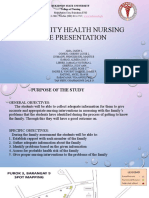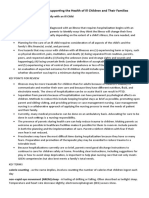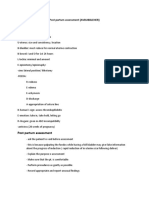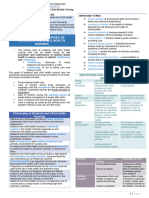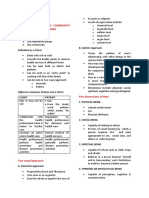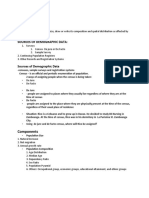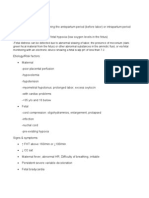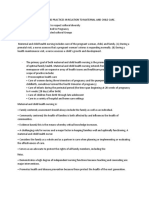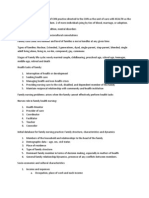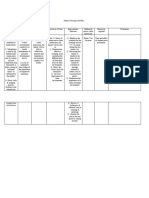Framework for Maternal and Child Health Nursing
Focusing on At-Risk, High Risk and Sick Clients
NCM 109A
NATIONAL HEALTH SITUATIONS ON MCHN
MCN services have improved, with more children living beyond infancy, a higher number of
women delivering at health facilities and more births being attended by professional service
providers than ever before.
Access to and provision of preventive, diagnostic and treatment services for communicable
diseases have improved, while there are several initiative to reduce illness and death due to
non-communicable diseases.
Despite substantial progress in improving the lives and health of people in the Philippines,
achievements have not been uniform and challenges remain
Deep inequities persist between regions, rich and the poor and different population groups.
Many Filipinos continue to die or suffer from illnesses that have well-proven, cost effective
interventions, such tuberculosis, HIV and dengue, or diseases affecting mother and child.
Many people lack sufficient knowledge to make informed decisions about their own health.
Rapid economic development, urbanization, escalating climate change, and widening
exposure to diseases and pathogens in an increasingly global world increase the risks
associated with disasters, environmental threats, and emerging and emerging infections.
Every day in 2017, approximately 810 women died from preventable causes related to
pregnancy and childbirth.
Between 2000 and 2017, the Maternal Mortality Ratio (MMR, number of maternal deaths
per 100,000 live births) dropped by about 38% worldwide.)
94% of all maternal deaths occur in low and lower middle-income countries.
Young adolescents (ages 10-14) face a higher risk of complications and death as a result of
pregnancy than other women.
WHY DO MATERNAL DEATHS OCCUR?
The high number of maternal deaths in some areas of the world reflects inequalities in
access to quality health services and highlights the gap between rich and poor. The MMR in
low income countries in 2017 is 462 per 100,000 live births versus 11 per 100,000 live
births in high income countries.
� Framework for Maternal and Child Health Nursing
Focusing on At-Risk, High Risk and Sick Clients
NCM 109A
In 2017, according to the Fragile States Index, 15 countries were considered to be "very
high alert" or "high alert" being fragile state (South Sudan, Somalia, Central African
Republic, Yemen, Syria, Sudan, the Democratic Republic of the Congo, Chad, Afghanistan,
Iraq, Haiti, Guinea, Zimbabwe, Nigeria and Ethiopia), and these 15 countries had MMRs in
2017 ranging from 31 (Syria) to 1150 (South Sudan).
The risk of maternal mortality is highest from adolescent girls under 15 years old and
complications in pregnancy and childbirth are higher among adolescent girls age 10-19
(compared to women aged 20-24) (2,3).
Women in less developed countries have, on average, many more pregnancies than women
in developed countries, and their lifetime risk of death due to pregnancy is higher. A
woman's lifetime risk of maternal death is the probability that a 15 year old woman will
eventually die from a maternal cause. In high income countries, this is 1 in 5400, versus 1
in 45 in low income countries.
WHY DO WOMEN DIE?
Women die as a result of complications during and following pregnancy and childbirth. Most of
these complications develop during pregnancy and most are preventable or treatable. Other
complications may exist before pregnancy but are worsened during pregnancy, especially of not
managed as part of the woman’s care. The major complications that account for nearly 75% of
all maternal death are:
The major complication that account nearly 75% of all maternal deaths are;
1. Severe bleeding
2. Infections
3. High blood pressure during pregnancy
4. Complications from delivery
5. Unsafe abortion
WHY DO WOMEN NOT GET THE CARE THEY NEED?
Poor women in remote areas are the least likely to receive adequate health care. This is
especially true for regions with low numbers of skilled health workers, such as sub-Saharan
Africa and South Asia.
The latest available data suggest that in most high income and upper middle income countries,
more than 90% of all births benefit from the presence of a trained midwife, doctor or nurse.
However, fewer than half of all births in several low income and low-middle-income countries
are assisted by such skilled health personnel.
� Framework for Maternal and Child Health Nursing
Focusing on At-Risk, High Risk and Sick Clients
NCM 109A
WHO RESPONSE
Improving maternal health is of WHO's key priorities. WHO works to contribute to the reduction
of maternal mortality by increasing research evidence, providing evidence-based clinical and
programmatic guidance, setting global standards, and providing technical support to member
states on developing and implementing effective policy and programs.









